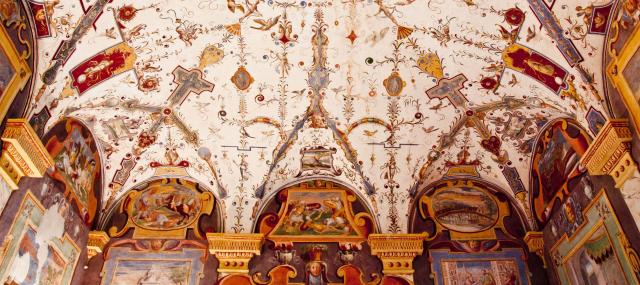Caesar’s Hall
Corgna Palace and the Medieval Fortress

The representation of the Life of Caesar, which decorates the study of Diomede, is taken from the writing of Suetonius and alludes to the legendary military exploits of Ascanius. The scenes illustrate the entire political path of Caesar, highlighting his audacity and qualities of a great leader. Among the most representative events are the Wars of Conquest against the Gauls, the Germans and Britons, the Rubicon Passage, border of the province under its competence, from which the civil war against Pompeo began, and the Battle of Pharsalus, which marked the beginning of his undisputed power in Rome.
Diplomatic qualities emerge in the episode of the Renunciation of the King's crown. The cycle ends with the killing of Caesar, which took place in 44 BC. within the Roman Senate. On the vault is the Della Corgna coat of arms, supported by two cherubs; along the right wall, a door gives access to the walkway that connects the palace to the medieval fortress. In addition to Circignani, an artist who worked on the decoration of this cycle whom local scholars identify with the Florentine Salvio Savini, a "court" painter active in the decoration of the villa of Cardinal Fulvio della Corgna, near Monte Tezio, and in the family palace in Città of the Pieve.